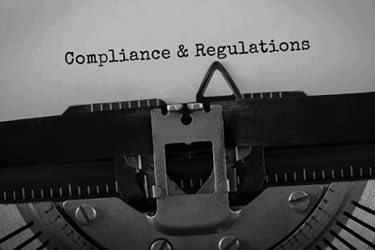Why You Should Engage With Regulatory Early In Product Development
By Katalin Abraham, Tunnell Consulting

The transition from research to product development is a bit more involved than simply adding “&D” to “R.” Involving regulatory affairs early in the development process facilitates definition and execution of the development pathway while considering both regulatory requirements and the company’s business needs.
It is a necessary paradigm shift to efficiently progress from the achievement of compelling preclinical data to clinical development and beyond. The goal moves from having an important article published in a well-respected, peer-reviewed journal to acquiring license approval for a commercially viable product; this is not an easy change. It is an important change to embrace, though, to assure good products that address unmet medical needs and/or provide improvements over existing therapies become available to the people who need them. It is important for business reasons as well.
Researchers are hardwired to seek answers, pursue interesting leads, question, explore, and generate data. Lots and lots of data. These inherent attributes make research scientists good at what they do. These skills are also integral in the pursuit of quality product development and subsequent licensure. They are necessary to identify and establish scientifically meaningful methods and processes. The challenge comes with the application of these skills to product development, as this change in focus restricts pursuit of other activities.
Business needs must be considered; development does not come cheap. Investors expect progress toward licensure to continue their support. Consider, as well, that the commercial product will become a source of revenue that will then support further research. These and other such considerations make getting to the commercial product stage expeditiously very important. Efforts must shift from discovery to focus on what is necessary to demonstrate safety, purity, potency, and consistency of manufacture, as required to support the product’s indication. Scientifically intriguing questions whose answers are not germane to supporting that indication need to be put on the back burner.
Further, the work conducted will now be held to different standards and subject to a different type of scrutiny. Documentation practices will need to change. More and different details must be captured. Documentation must reflect details for planning and execution of activities in support of the goal to avoid potential repeats and other types of delays. The record must be accurate, complete, secure, and retrievable for reference in later-stage development, scrutiny during regulatory authority inspections, and support of process improvements, development of line extensions, conduct of investigations, and the like.
The Role Of Regulatory Affairs In Early Development
The amount of regulatory affairs involvement at this early stage may be minimal but of long-term benefit. Timely involvement and continuity matter. While it is clear what attributes must be demonstrated for the product, i.e., safety, purity, potency, and consistency of manufacture, how to achieve that demonstration tends to be complicated. Few of those “hows” are textbook, particularly for biologics. Demonstration can be confounded by considerations such as the complexities of the processes, the variability of the analytical methods, and uncertainty regarding what constitutes a meaningful endpoint. What standards are suitable evolves throughout the development process as knowledge about the product increases and larger numbers are dosed in later-stage clinical studies. The FDA’s guidance also evolves with the technology as new information becomes available about the disease state and its prevention and/or treatment. Regulatory affairs professionals are poised to navigate this path.
Engaging regulatory affairs early in development will reduce the risk of delays in late-stage development. Their familiarity with the regulatory landscape, technology, product development life cycle, and company’s business approach provides the lens with which to scrutinize early activities in consideration of the goal of licensure and commercialization.
Regulatory affairs professionals listen to the story, challenge the assumptions, offer options, help define risk (including consequences), and act as liaisons with and interpreters for the FDA. This can make all the difference in distinguishing between what is letter of the law and what constitutes meaningful adherence.
Applying The Right Guidance
It is easy enough to conduct an Internet search for the right guidances; it takes a regulatory affairs professional to understand the end game to meaningfully apply them. For example:
The FDA issued the Guidance for Industry and Review Staff: Target Product Profile — A Strategic Development Process Tool in March 2007. As described in that guidance, a target product profile (TPP) is a template for the summary of a drug development program described in terms of labeling concepts. The recommendation to implement such a template came from a Clinical Development Working Group made up of FDA and industry representatives that had been formed to identify ways in which FDA/sponsor interactions during the drug development process could be improved.
As the FDA describes it, the intent of the TPP is to provide a summary to help focus discussions between sponsors and the FDA during product development. An efficient and appropriate dialogue during the drug development process can minimize the risk of late-stage drug development failures, increase the probability that optimal safety and efficacy data are available in a timely manner, improve labeling content, and possibly decrease the total time of drug development.
The TPP is useful and organized according to the key sections of the proposed labelling for the product. Regulatory affairs can apply this tool effectively. As development proceeds, they can explain what is considered more in-depth understanding of the product and what constitutes a change. They can address the implications and how to incorporate these developments into the process, avoiding derailment of the plan. Their early involvement provides that perspective for the company to initiate a TPP early in development, well before preparations for engagement with the FDA. Just as a TPP helps focus discussion between the sponsor and the FDA, applied upstream it helps focus discussion among the functional areas within the company. Regulatory affairs can facilitate that effort, as a preamble to FDA engagement. As documenting the assumptions that allow for definition of the product indication would optimally be part of a thorough process for initiating the TPPs, capture of those assumptions has additional benefit as reference to evaluate any reassessments that may become necessary as more data about the product accrues.
This is but one example. Incorporating the regulatory perspective into planning in early development, well before engagement with the FDA is imminent, assures the science is focused on the goals of clinical development and subsequent licensure, allowing development to move forward expeditiously. The investment of time and resources is small at this point but can have significant impact, as it will help avoid delays in later-stage development.
About The Author:
 Katalin Abraham is a senior regulatory affairs consultant at Tunnell Consulting with over 30 years of experience in the life sciences and a strong multifunctional regulatory, quality, and technical background. Her regulatory experience spans pre-IND through BLA submissions to life cycle management, forging pathways for new technology products, sustaining product supply, and developing a viable regulatory compliance infrastructure for clinical sample testing laboratories. She has extensive experience in helping cross-functional teams develop, negotiate, and implement regulatory strategy in alignment with regulations and business goals, with significant experience and successful interaction, both formal and informal, with the FDA and other regulatory authorities. Abraham can be reached at katalin.abraham@tunnellconsulting.com.
Katalin Abraham is a senior regulatory affairs consultant at Tunnell Consulting with over 30 years of experience in the life sciences and a strong multifunctional regulatory, quality, and technical background. Her regulatory experience spans pre-IND through BLA submissions to life cycle management, forging pathways for new technology products, sustaining product supply, and developing a viable regulatory compliance infrastructure for clinical sample testing laboratories. She has extensive experience in helping cross-functional teams develop, negotiate, and implement regulatory strategy in alignment with regulations and business goals, with significant experience and successful interaction, both formal and informal, with the FDA and other regulatory authorities. Abraham can be reached at katalin.abraham@tunnellconsulting.com.
